Praise for Ashtanga Yoga: Practice and Philosophy
I love Ashtanga Yoga: Practice and Philosophy. At last there is a book that is not just on asana but coupled with that, the real beauty of asana and philosophy.
Frances Liotta, founder of Yogamat
Gregor Maehles Ashtanga Yoga: Practice and Philosophy weaves philosophy and integrated knowledge of anatomy into our yoga practice to keep us centered in the heart of a profound tradition. He also gives us a brilliant translation and commentary on the Yoga Sutra, revealing a deep philosophical and historical context in which to ground and stimulate our entire lives.
Richard Freeman, founder of the Yoga Workshop in Boulder, Colorado, and author of The Yoga Matrix CD
A much-needed new tool for practicing the method with greater safety in the physical form and with much needed depth in the inner form of the practice. I especially appreciate the comprehensive approach, which includes philosophical perspectives, anatomy, vedic lore, a thorough description of the physical method itself as well as a complete copy of Patanjala Yoga Darshana. A valuable contribution to the evolving understanding of this profound system and method of yoga.
Chuck Miller, Ashtanga yoga teacher,
senior student of Sri K. Pattabhi Jois since 1980
ASHTANGA YOGA
Practice and Philosophy
ASHTANGA YOGA
Practice and Philosophy
A Comprehensive Description of the
Primary Series of Ashtanga Yoga,
Following the Traditional Vinyasa Count,
and an Authentic Explanation of
the Yoga Sutra of Patanjali
Gregor Maehle


Copyright 2006 by Gregor Maehle
All rights reserved. This book may not be reproduced in whole or in part, stored in a retrieval system, or transmitted in any form or by any means electronic, mechanical, or other without written permission from the publisher, except by a reviewer, who may quote brief passages in a review.
The material in this book is intended for education. Please consult a qualified health care practitioner before beginning any exercise program and learn yoga under personal supervision. This book is not a substitute for medical advice or instruction from a qualified yoga teacher. No expressed or implied guarantee as to the effects of the use of the recommendations can be given nor liability taken.
Every effort has been made to contact the holders of copyright of quoted material.
Originally published in Australia by Kaivalya Publications in 2006.
Text design and typography by Allan Watson
Photography by Adrian Kat
Illustrations by Steve Dance
Front cover photograph: Gregor Maehle and Monica Gauci performing Kaundinyasana, a posture dedicated to the sage Kaundinya, author of the commentary on Lakulishas Pashupata Sutra; back cover photograph: Gregor Maehle and Monica Gauci performing Yoga Mudra.
Library of Congress Cataloging-in-Publication Data
Maehle, Gregor.
Ashtanga yoga: practice and philosophy: a comprehensive description of the primary series of ashtanga yoga and an authentic explanation of the Yoga sutra of Patanjali / Gregor Maehle.
p. cm.
Includes bibliographical references and index.
ISBN 978-1-57731-606-0 (pbk.: alk. paper)
1. Astanga yoga. 2. Patajali. Yogasutra. I. Title.
RA781.68.M34 2007
First New World Library edition, September 2007
ISBN-10: 1-57731-606-1
ISBN-13: 978-157731-606-0
Printed in Canada on partially recycled, acid-free paper
 New World Library is a proud member of the Green Press Initiative.
New World Library is a proud member of the Green Press Initiative.
10 9 8 7 6 5 4 3 2 1
To the first and foremost of all teachers,
who has been known by various names,
such as the Brahman, the Tao, the Lord, and the Mother,
and who, after all names are left behind,
is still there as the incomprehensible, luminous,
vibrant, silent, vast emptiness in my heart.
Note
It is important to learn Ashtanga Yoga by the traditional method, according to which the next posture is added on only when the student has gained proficiency in the previous one. In this way excessive exertion, fatigue, and unwanted side effects are avoided. Proficiency in a posture can be assessed only by a qualified teacher.
The importance of learning the method from a qualified teacher cannot be stressed enough. It is not possible to learn yoga from a book or video, because these media cannot provide feedback when the student engages in a posture poorly. If this should be the case, little or no benefit would be gained from the practice; in fact damage could be done.
CONTENTS
Om
Vande gurunam charanaravinde
sandarshita svatma sukhavabodhe
nih shreyase jangalikayamane
samsara halahala mohashantyai
Abahu purushakaram
shankhachakrasi dharinam
sahasra shirasam shvetam
pranamami patanjalim
Om
I bow to the lotus feet of the supreme teacher
who reveals the happiness of self-realization;
who like the jungle doctor removes the delusion
caused by the great poison of conditioned existence.
To Patanjali, who (representing the serpent of infinity)
has thousands of white, radiant heads,
who in his human form holds a conch (representing sound),
a discus (representing light), and a sword (representing discrimination),
I prostrate.
In the year 3102 BCE, the emperor Yudishthira stepped down and awaited the death of Krishna and the beginning of the dark age (Kali Yuga). Due to the increasing materialism and corruption of that age, the ancient sages (rishis) retreated into the recesses of the Himalayas.
However, as vedic teacher David Frawley has pointed out, the rishis have not disappeared entirely: they are observing mankind from a distance. It depends on us whether it will become possible for them to return and with them much of the knowledge, wisdom, and intelligence of humankind. Through our combined efforts we must try to usher in a new golden age (Satya Yuga).
This book is an attempt to bring about a renaissance of ancient dharma and to play a part in restoring yoga to the glory it once was.
May all beings experience that which is auspicious.
Gregor Maehle
Perth, Australia
Ninth day of the bright fortnight in the lunar mansion of Phalguni, year 5108 Kali Yuga
I extend my thanks to all the following:
To teachers who have influenced my work
Yogasana Visharada Shri Krishna Pattabhi Jois of Mysore, who taught me this method, which he had received from his teacher Shri Tirumalai Krishnamacharya. Without the work of K. Pattabhi Jois, Ashtanga Vinyasa Yoga would have been lost. All modern practitioners of Ashtanga Yoga benefit directly or indirectly from his teaching.
Yoga Shastra Pundita Shri B. N. S. Iyengar of Mysore, student of T. Krishnamacharya and K. Pattabhi Jois, who instructed me in yoga philosophy.
Shri A. G. Mohan, student of T. Krishnamacharya, who answered my final questions regarding the Yoga Sutra.
Richard Freeman, Dena Wiseman, and Graeme Northfield, all students of K. Pattabhi Jois, who deepened my understanding of

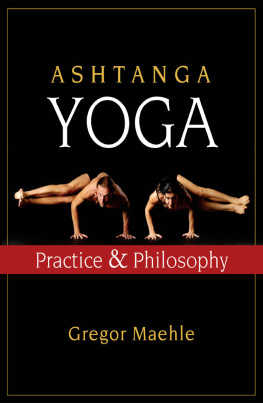

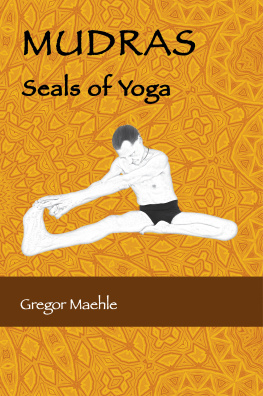
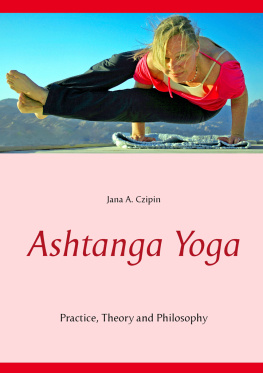
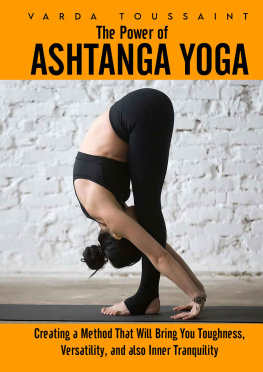
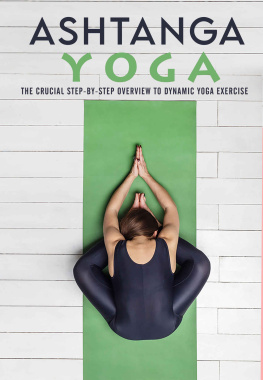
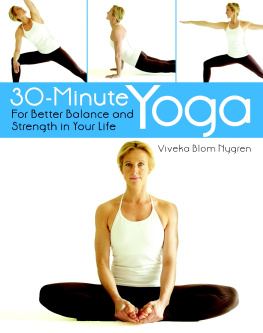
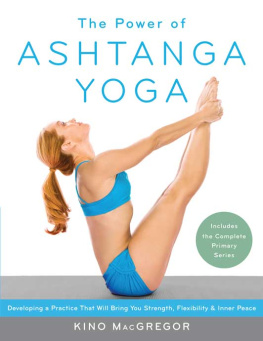
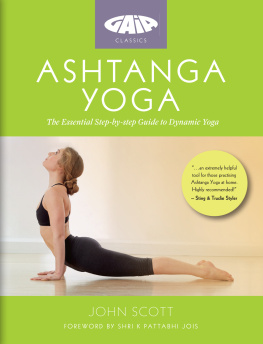

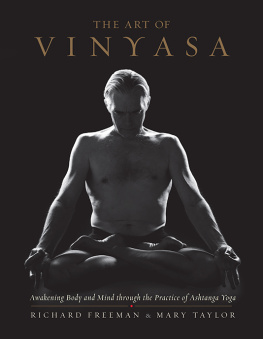
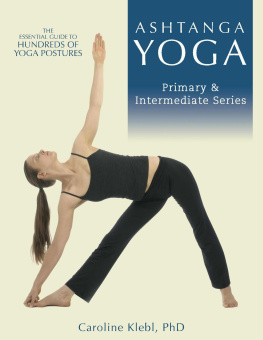
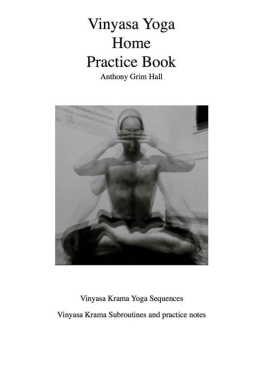



 New World Library is a proud member of the Green Press Initiative.
New World Library is a proud member of the Green Press Initiative.